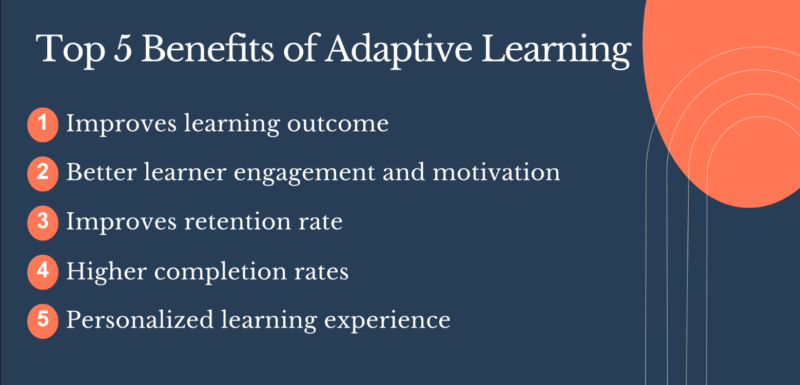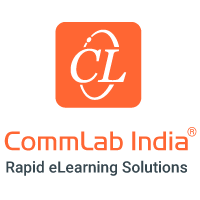The Hard Truth About Corporate Learning
Corporate training is under fire internally and externally. From stakeholders demanding measurable ROI to learners frustrated with long-winded, generic content, L&D professionals are caught in a bind. The modern workforce doesn’t want hour-long modules that feel like a waste of time. They want custom eLearning solutions that help them deliver business results faster. In fact, they need an adaptive learning experience.
Much of today’s training is too long, too irrelevant, and too theoretical. Even when well-designed eLearning courses often fail to translate into behavior change. Worse still, the bulk of that effort disappears within days. According to well-established retention studies, up to 60% of newly learned information is forgotten within 48 hours if it’s not reinforced. Combine this with the reality that most L&D teams are still measuring success through course completion rates, and it becomes clear: we’re not solving the right problems.
What Is Adaptive Learning?
Adaptive learning adjusts the training experience in real time—a dynamic, data-driven approach—based on individual needs, knowledge level, and behavior. It’s not just about prettier platforms or faster quizzes; it’s about constructing a learning journey tailored to the individual, while still aligning with organizational goals.
In practice, adaptive learning platforms use diagnostics, learner interactions, and ongoing performance data to decide what content to present, when, and how. A new sales rep who already understands the product line, for example, might skip the introductory modules of a custom eLearning course and head straight into objection handling. Meanwhile, another rep weak in pricing strategy might receive extra simulations and job aids over the following week. This is learning that pivots, intelligently and immediately.
Think of it like Google Maps for learning: rerouting when needed, accelerating when possible, pausing when necessary.
Why Adaptive Learning Works
One of the greatest strengths of adaptive learning is its alignment with how humans actually learn. It embraces microlearning, delivering short, focused content in digestible chunks that fit into daily workflows. Platforms such as Axonify and Qstream have mastered this approach, dripping out 2–5-minute learning segments that reinforce core skills, assess retention, and fill knowledge gaps on the fly.

Image by CommLab India
Another pillar is spaced repetition, a scientifically proven strategy for improving long-term memory. Instead of a one-and-done course, key learning points are revisited over time, increasing the spacing as the learner demonstrates mastery. MaxLearn, for instance, has shown that repeated exposure via adaptive intervals can significantly boost retention compared to traditional formats.
Importantly, adaptive learning also respects the learner’s current ability. Platforms such as Duolingo and Khan Academy adjust difficulty based on response accuracy and speed, ensuring that learners neither coast through eLearning courses nor feel overwhelmed. If you’re nailing algebra, you move ahead. If your French conjugation needs work, you loop back with related learning. This logic applies beautifully in corporate environments where skill levels vary dramatically across departments and job roles.
What’s Under The Hood?
A high-functioning adaptive system does more than adjust content—it learns and evolves. It starts with pre-assessments in custom eLearning courses that inform the starting point. From there, the system collects data on learner interactions, time spent, quiz results, and behavioral cues such as confidence ratings or decision patterns.
This is where technologies such as xAPI (Experience API) and Learning Record Stores (LRS) come into play. Unlike older SCORM standards, xAPI can track learning beyond the LMS, across mobile apps, simulations, chatbots, Slack, and even Virtual Reality (VR) environments. This holistic tracking builds a comprehensive learner profile. The LRS becomes the hub of that intelligence, feeding insights into adaptive algorithms and generating reports for L&D teams and compliance auditors alike.
Some platforms use simple decision trees (rules-based adaptivity), while others incorporate Machine Learning to predict learner needs and deliver recommendations in real time. The sophistication may vary, but the goal remains the same: right content, right time, right learner.
Corporate Use Cases Of Adaptive Learning
Consider compliance training. Traditionally, it’s a yearly grind—long modules, rigid deadlines, bored learners. Adaptive systems change that dynamic by reinforcing compliance principles throughout the year in short, contextually relevant interactions. Flashcards, scenario-based nudges, and brief policy refreshers keep content fresh and actionable, while data dashboards prove understanding, not just participation.
In onboarding, adaptive learning can personalize the experience for every new hire. A developer with prior cloud experience can skip foundational modules and dive into the organization’s specific toolsets, while a marketing analyst new to B2B may receive deeper support around sales funnels and terminology. The result? Faster ramp-up time and a more engaged employee.
Sales enablement is another big win. Reps face a constant stream of product updates, pricing changes, and objection-handling tactics. An adaptive system delivers role-based updates tailored to geography, product focus, or performance history. The learning is pushed out over days and weeks, reinforced through short assessments and simulations, so reps retain and apply what they learn.
Even leadership development benefits. As managers grow, they need content aligned to their maturity, not boilerplate case studies. Adaptive systems surface more strategic content only after operational mastery is demonstrated, creating a truly developmental journey.
The Data Behind Adaptive Success
Modern adaptive platforms don’t just deliver training, they generate insight. L&D managers can track knowledge growth over time, compare team and departmental performance, and even drill down to specific learning objectives or question types.
In a global healthcare rollout, Qstream delivered a 17% improvement in knowledge retention over static eLearning. MaxLearn reports up to 80% content retention after one month when using spaced reinforcement compared to less than 25% without it. These are not vanity metrics. They are business-critical outcomes tied directly to training investment.
Moreover, adaptive analytics answer crucial questions in compliance-heavy industries: “How do we know our employees know what they need to know?” It’s no longer about checking a box. It’s about demonstrated, retained competence that is measured continuously, not just at a course’s end.
Challenges And Pitfalls To Avoid
Despite its promise, adaptive learning is not a plug-and-play magic bullet. Implementations can falter when organizations underestimate the content preparation involved. Adaptive systems need modular, tagged, and outcome-aligned content to work well. If your training library is full of 60-minute monoliths, you’ll need to break it down first.
There’s also a mindset shift required. Adaptive learning isn’t about “covering material.” It’s about facilitating mastery. That means trusting the platform to skip, repeat, or delay content—not always an easy ask for Subject Matter Experts (SMEs) or regulators.
Finally, technical integration can be a barrier. xAPI and LRS adoption is growing, but not all organizations are ready. Ensure your tech stack can support the level of adaptivity you want before committing.
Future Trends: AI, Real-Time Feedback, And Beyond
Adaptive learning is evolving fast. Artificial Intelligence is enabling real-time personalization beyond what rules-based systems could achieve. Platforms are now analyzing not just what learners choose, but how they engage—confidence scores, eye tracking, hesitation patterns—to better infer knowledge gaps.
Meanwhile, immersive technologies such as VR and Augmented Reality (AR) are being layered into adaptive learning paths. Imagine an eLearning course on safety training where the system dynamically shifts the simulation based on your actions or inaction.
Looking ahead, adaptive platforms may start to incorporate predictive analytics tied to performance management systems, offering just-in-time learning to address emerging job performance risks. In this future, learning isn’t reactive; it’s preventive.
Final Thoughts: A Call To Adapt
The future of L&D is not about building more custom courses. It’s about guiding learners through performance-driven experiences that evolve with them.
Adaptive learning gives us that power. It respects the learner’s time. It satisfies the organization’s demand for ROI. And it finally puts measurement where it belongs: on outcomes, not completions.
So, the question for every L&D leader is simple: Are you still pushing static content? Or are you ready to adapt?
Read More:

CommLab India
CommLab India specializes in leveraging rapid learning strategies and cutting-edge technologies to design custom eLearning courses that deliver exceptional value through scalability and speed of delivery.


